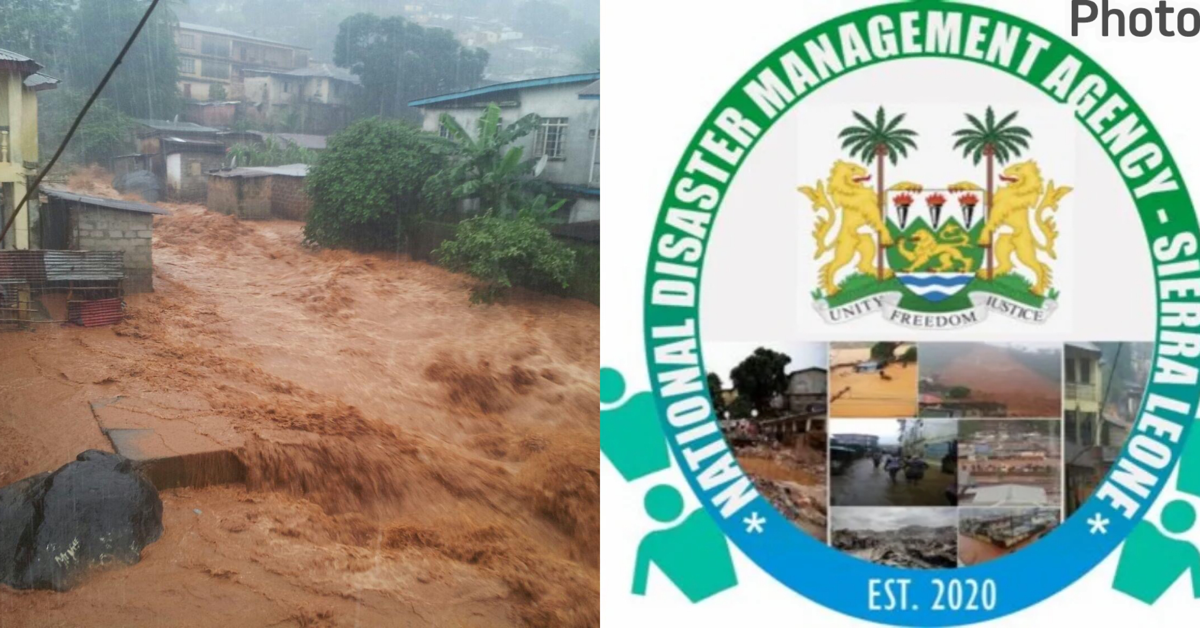The Director of Communications at the National Disaster Management Authority (NDMA), Mohamed L. Bah, stated in a recent interview that Sierra Leone has experienced the lowest incidents of flood disasters in 2023.
He mentioned that the NDMA has completed their hazard mapping and prepared a calendar to develop a communication strategy focused on addressing various disasters, including floods, fires, and windstorms.
“Those jingles are been aired across the country at the moment. AYV Media is currently running a documentary for us that deals with low flood prevention for this period.” he states
He elaborated that in their calendar, they intensify and implement strategies developed to address specific periods. To effectively implement these strategies, they analyze data to identify the sections most vulnerable to rainfall and target their messages accordingly. They use a tool called the Kobo Tool to map the affected areas and collaborate with ECSL and mobile companies to access data on people’s locations. If SL Mat predicts more than 200 meters of rain leading to flooding, targeted message alerts are sent to individuals and communities in disaster-prone areas. He emphasized that this ongoing effort focuses on specific vulnerabilities.
Additionally, he mentioned their efforts to update data, as previously the regional body, ECOWAS, responsible for disaster management and risk reduction, lacked information about Sierra Leone.
“No data at all like how many disasters occurred and it was these data ECOWAS use to help and allocate funds to countries that are affected by disasters. Since 2021 that we started we have been providing them with data about disaster occurrences in Sierra Leone.”
According to him, NDMA has made data available to ensure that the significant post-flooding assistance will reach those affected since 2021. To enhance their capabilities for search and rescue operations, they have established centers at the newly constructed airport and in their office, which is crucial for airport operations.
Recognizing the unpredictability of emergencies, they have developed training programs for partners like the Police, Freetown City Council, the Maritime Administration, and the Marine Navy wing, to be prepared for any helicopter or plane-related emergencies. He highlighted that Sierra Leone now has its own search and rescue center, previously only available in Liberia.
“We bring that up because the only way in the region for search and rescue was in Liberia and now Sierra Leone has had his that is a sub-component of the one in Liberia.”
Additionally, they have identified specific areas for bins and collaborated with the Ministry of Lands to allocate these lands to Freetown City Council (FCC) for that purpose.
In the end, he said, “Many people build without land permits so we have implemented various pillars and these pillars are provided with leadership from ministries, departments, and agencies in the country, like, for example, the Risk Reduction Pillar is been led by the Ministry of Land and they will be the head in tending to issues of land grabbing and demarcations.”
According to him, they collaborate with these ministries because they are specialized in their respective areas and have the expertise required for effective disaster management.


 Post a comment
Post a comment









Comment(s)
Disclaimer: Comments expressed here do not reflect the opinions of Sierraloaded or any employee thereof.
Be the first to comment